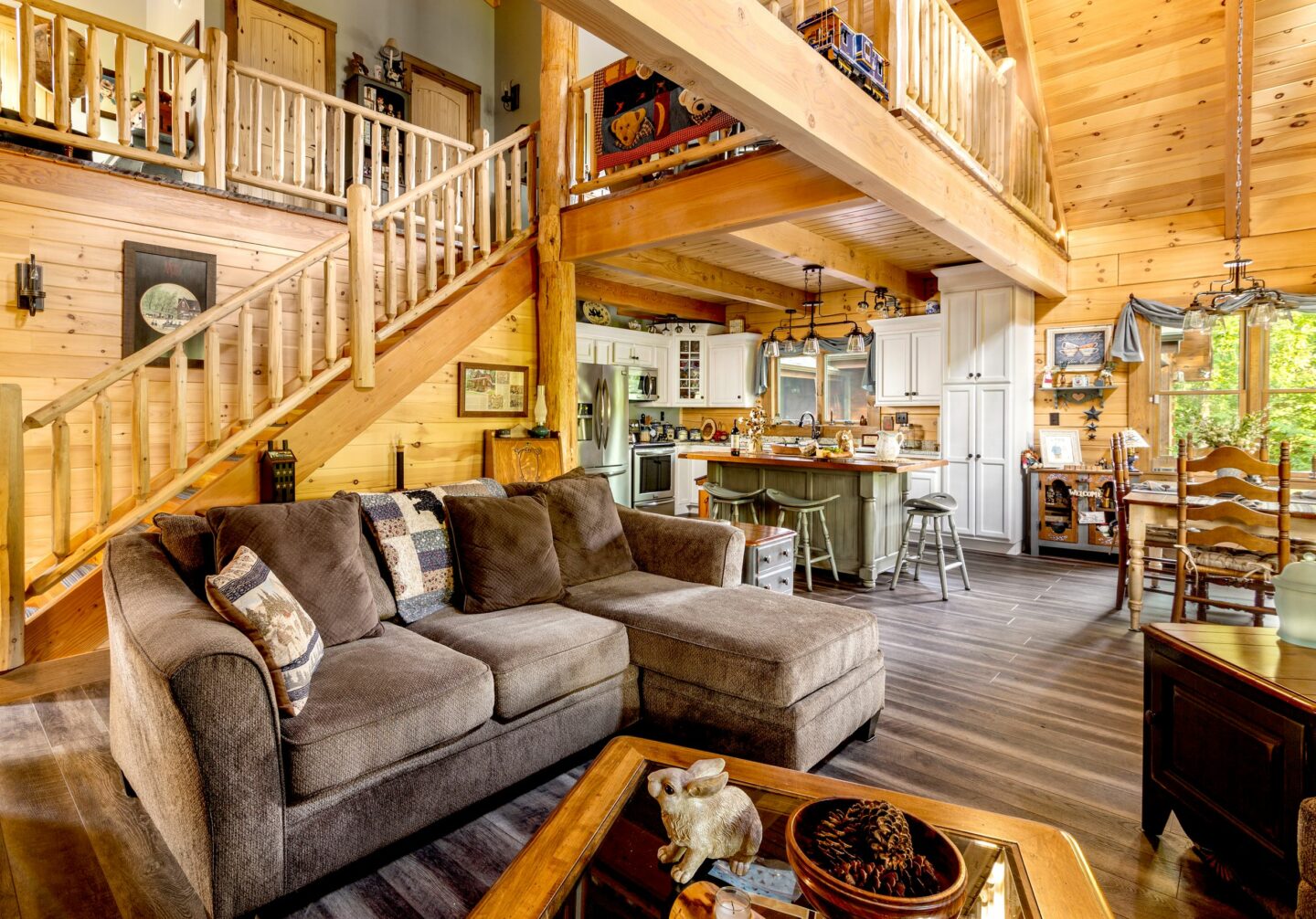A Kentucky couple’s cabin feels like “vacation every day.”
As their youngest daughter’s high school graduation approached, Ken and Stephanie knew their 4,500-square-foot home in Boyd County, Kentucky, would be too big for the two of them when she headed off to college.
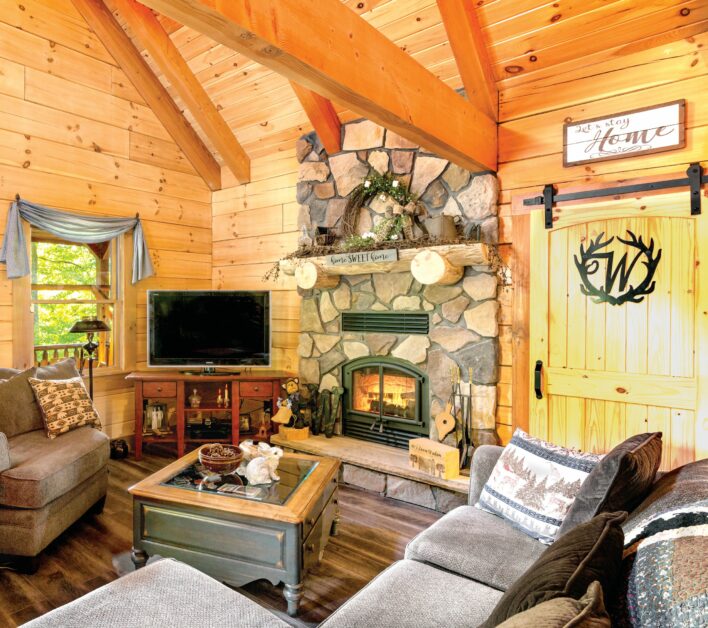
The couple’s three older children had already left the nest, so they didn’t need the home’s four bedrooms, four bathrooms and two kitchens. The swimming pool and large city lot meant Ken and Stephanie were spending a lot of time and money on upkeep of space they didn’t need.
Ken was entering retirement after a long career with the railroad, and Stephanie looked forward to free time after raising four children. Downsizing to a smaller house on property that wouldn’t require a lot of maintenance just made sense.
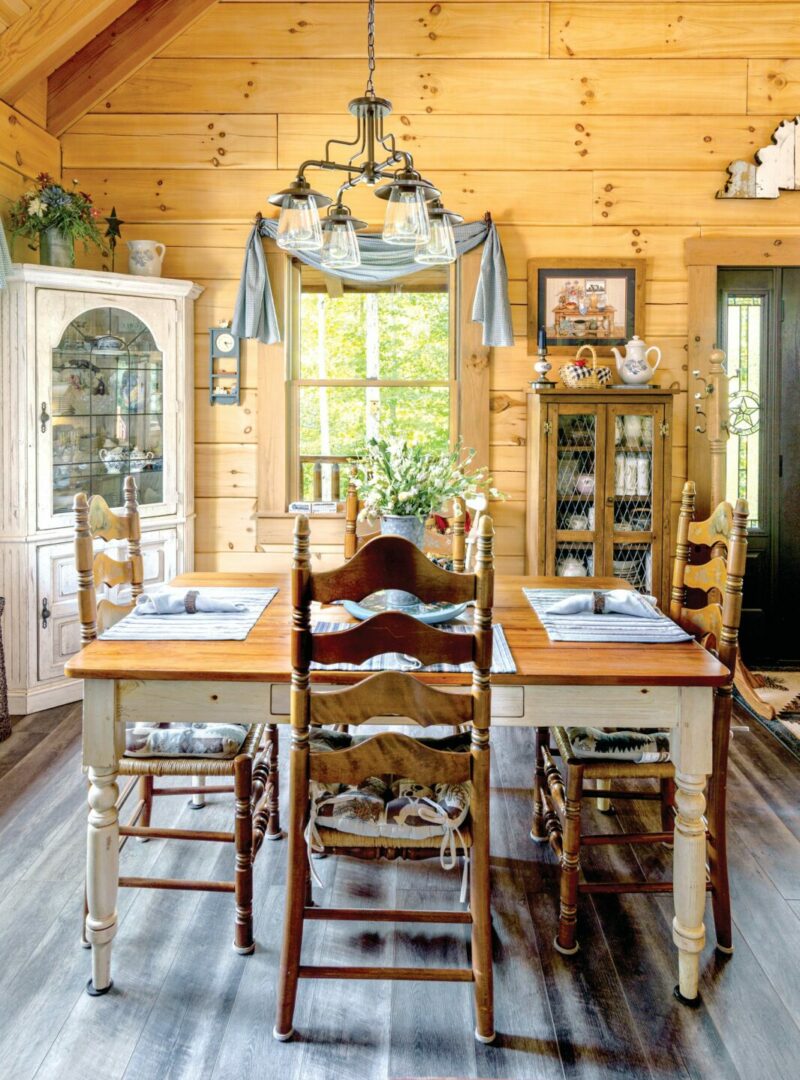
Ken and Stephanie started looking for property outside of town, taking road trips on the weekends to explore the Appalachian countryside along the Ohio River. They found the perfect spot on a hilltop outside of Ashland, right across the river from the southern tip of Ohio and adjacent to neighboring West Virginia.
The couple knew they wanted to build a log home, so they spent some time visiting different log home companies and looking at model homes. “We drove around looking at models for two or three years, just seeing the different things that were available,” says Stephanie. They eventually selected Hochstetler Log Homes in Loudonville, Ohio, as their log home producer, with Samuel Mast of Cedar Creek Cabins handling the construction.
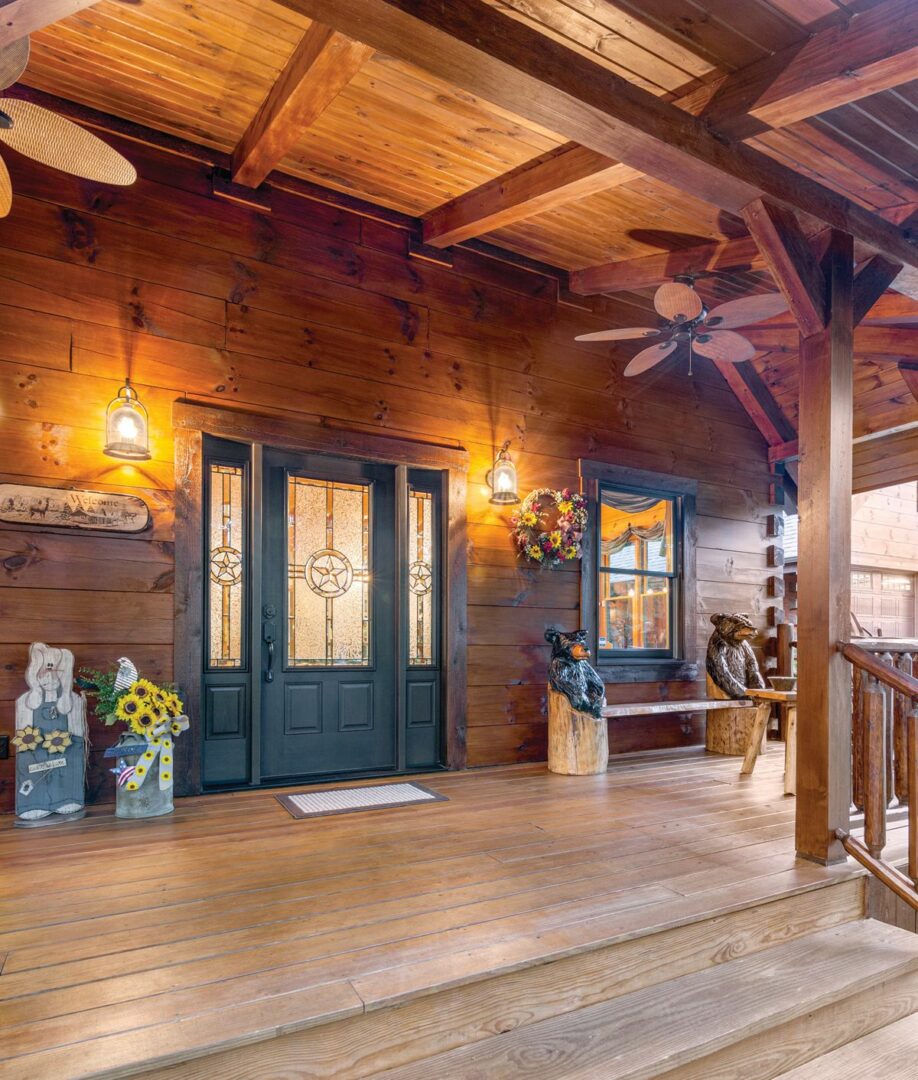
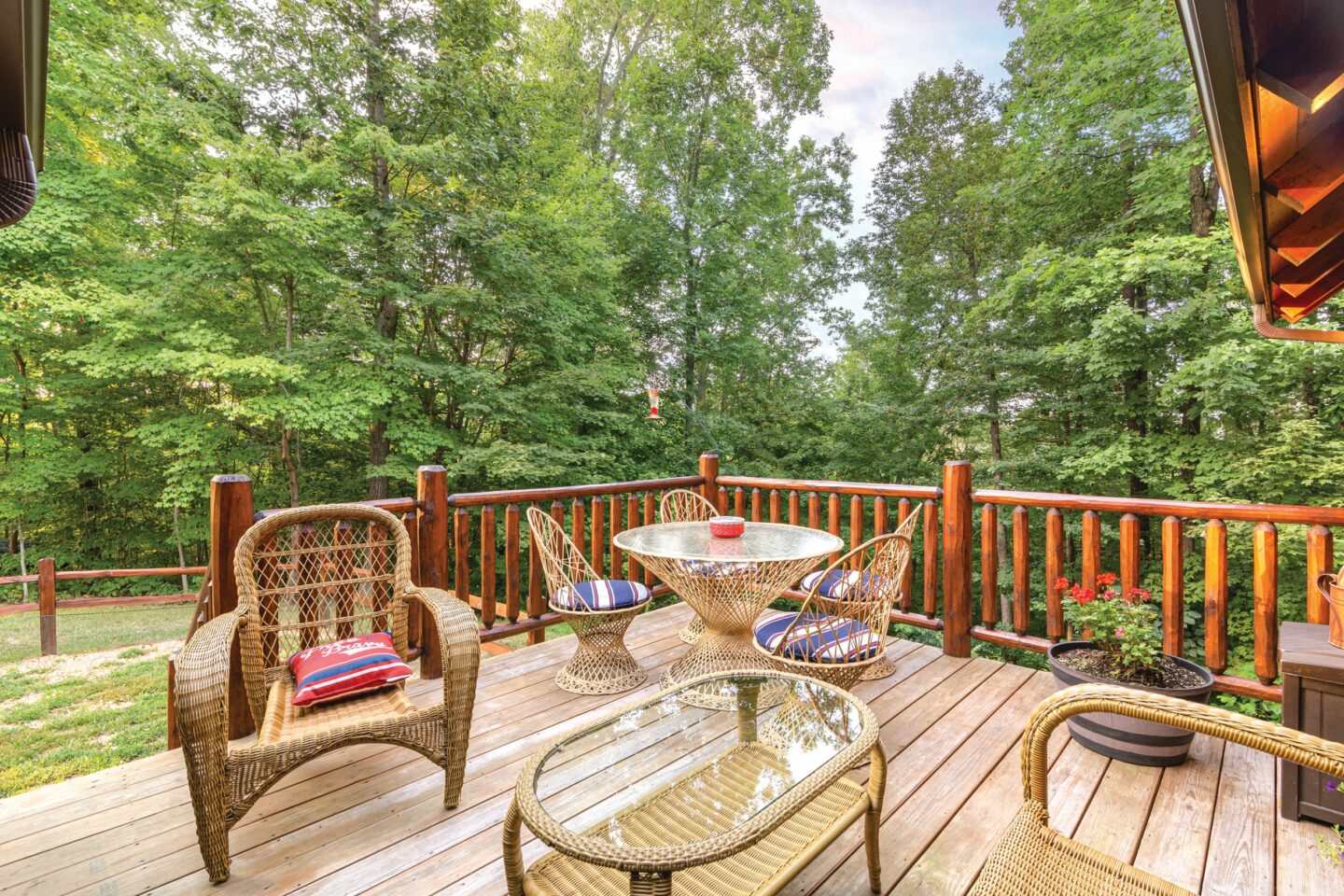
“We liked Hochstetler because of the quality of the model homes,” says Ken. “They took great pride in their craftsmanship and pride in their work.” The company also impressed Ken and Stephanie with their hospitality. “They gave us a tour of their mill and showed us how the wood was cut and cured,” says Ken.
Ken and Stephanie knew what they wanted in their home’s design and had already produced some rough sketches. They worked with Doug Coen, design manager at Hochstetler Log Homes, and the company’s architect to combine elements from existing log home designs to come up with a custom plan. “They liked several designs of ours, so what we came up with had a piece of everything they liked,” says Coen. “They knew how much space they wanted and focused on price and not sacrificing comfort.”
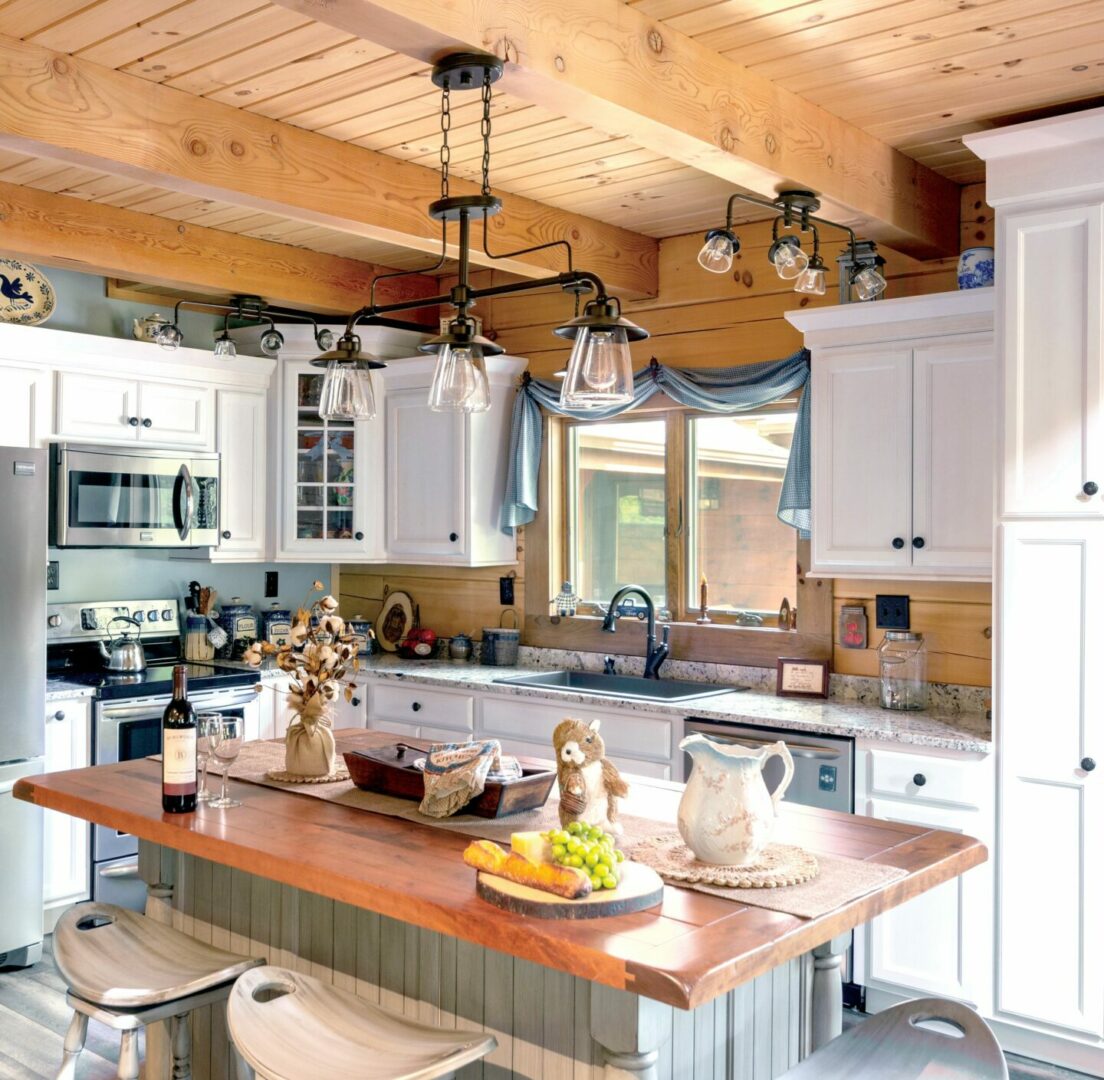
How small is too small? Coen says that lifestyle is always an important consideration in home design, especially when you’re downsizing. “When people come in and talk about downsizing, I ask what spaces they are going to spend the most time in,” he says. “For some customers, having a ranch-style home is important, or they have a large family and want a 1,000-square-foot home most of the year, but for the holidays they need it to feel like 5,000 square feet, so we try to design flexible space that meets their needs.”
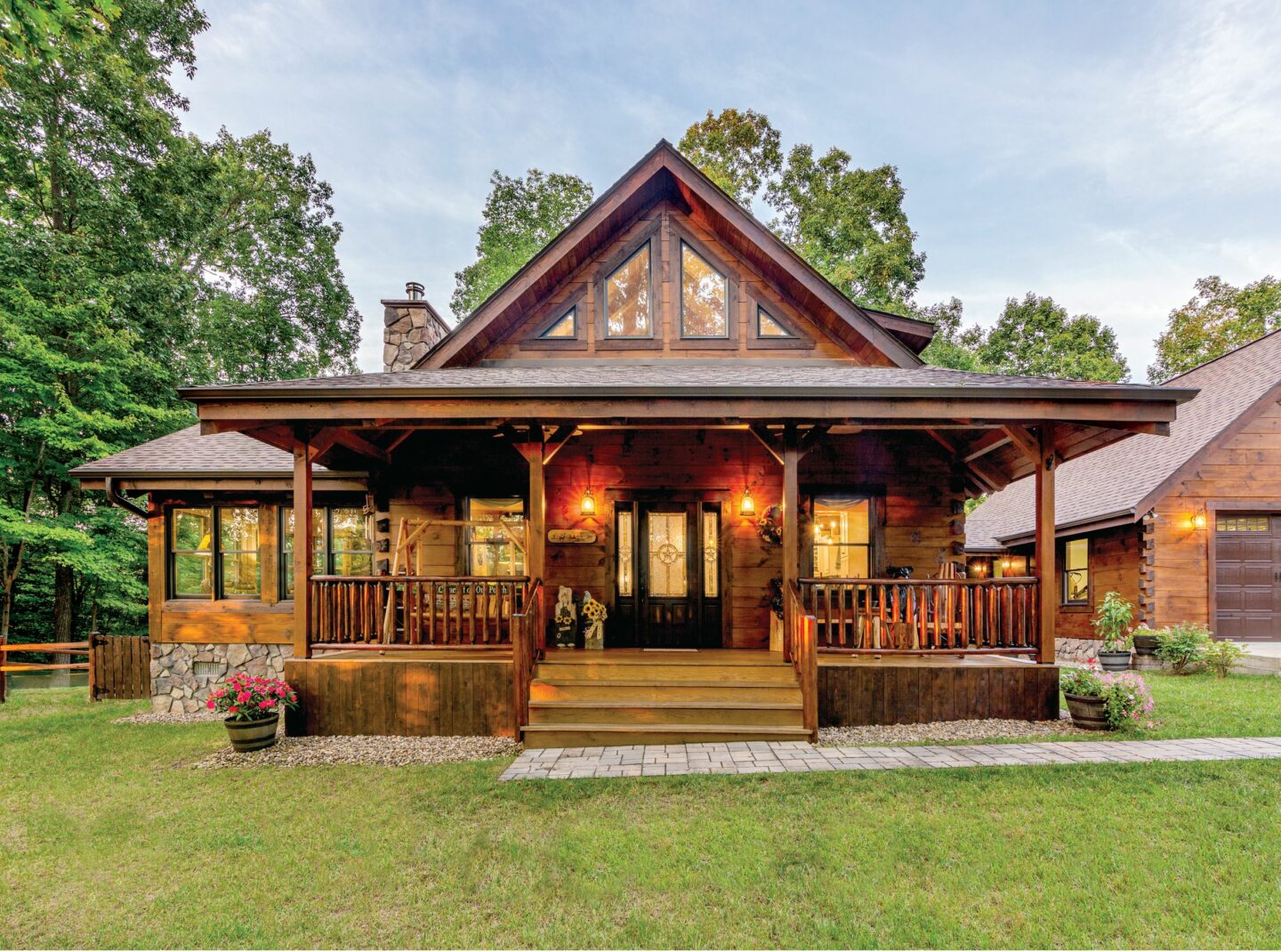
Ken and Stephanie knew they wanted a home that was small enough for the two of them most of the time but also able to accommodate family gatherings and provide space for their daughter to call her own on college breaks. “We knew we wanted an open-concept dining/kitchen/great room,” says Ken, adding that they estimated the square footage based on the furniture they were bringing from their previous home.
The resulting home, built of kiln-dried white pine with Douglas fir timbers, is just the right size. It has two bedrooms, each with its own bathroom, an open kitchen and great room, and a sunroom, as well as an unfinished basement and a garage with a large attic.
The sunroom is a favorite spot for both Ken and Stephanie. “If we had to do anything differently, we’d probably make the sunroom a little bit bigger,” says Ken. They enjoy the privacy the surrounding trees provide, but enjoy the proximity to town. “We have the best of both worlds,” says Ken. “You’d never know it! I’m sitting in the sunroom looking out at the woods right now—you’d think we are 100 miles from anyone.”
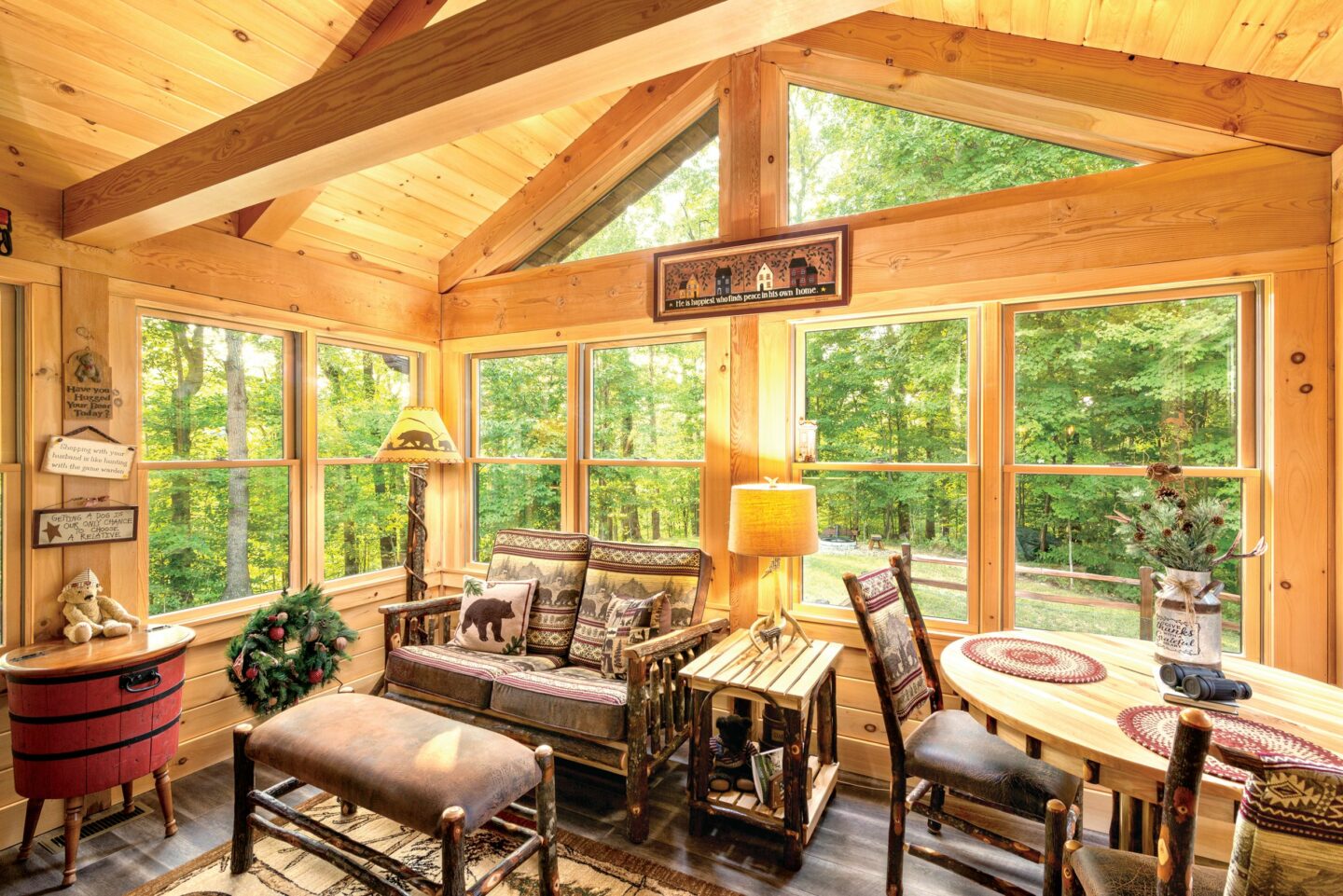
The flexible extra storage space in the basement and attic allowed Ken and Stephanie to hang on to cherished belongings and take their time sorting through them. It also adds value if they ever decide to sell the home. The basement could easily be finished to add a recreation room or additional bedrooms, and the attic space could be transformed into an office or exercise room.
“It’s a challenge to go to half of what you had,” says Ken. “You have to ask yourself: what do you want to keep and what do you want to get rid of and what goes to the kids?” After 51 years of marriage, Ken and Stephanie were luckily on the same page when it came to downsizing. “We still have a few things up in our attic that we just couldn’t part with,” says Stephanie. “When our daughter moves out of her room upstairs, I may bring a few things out of storage!”
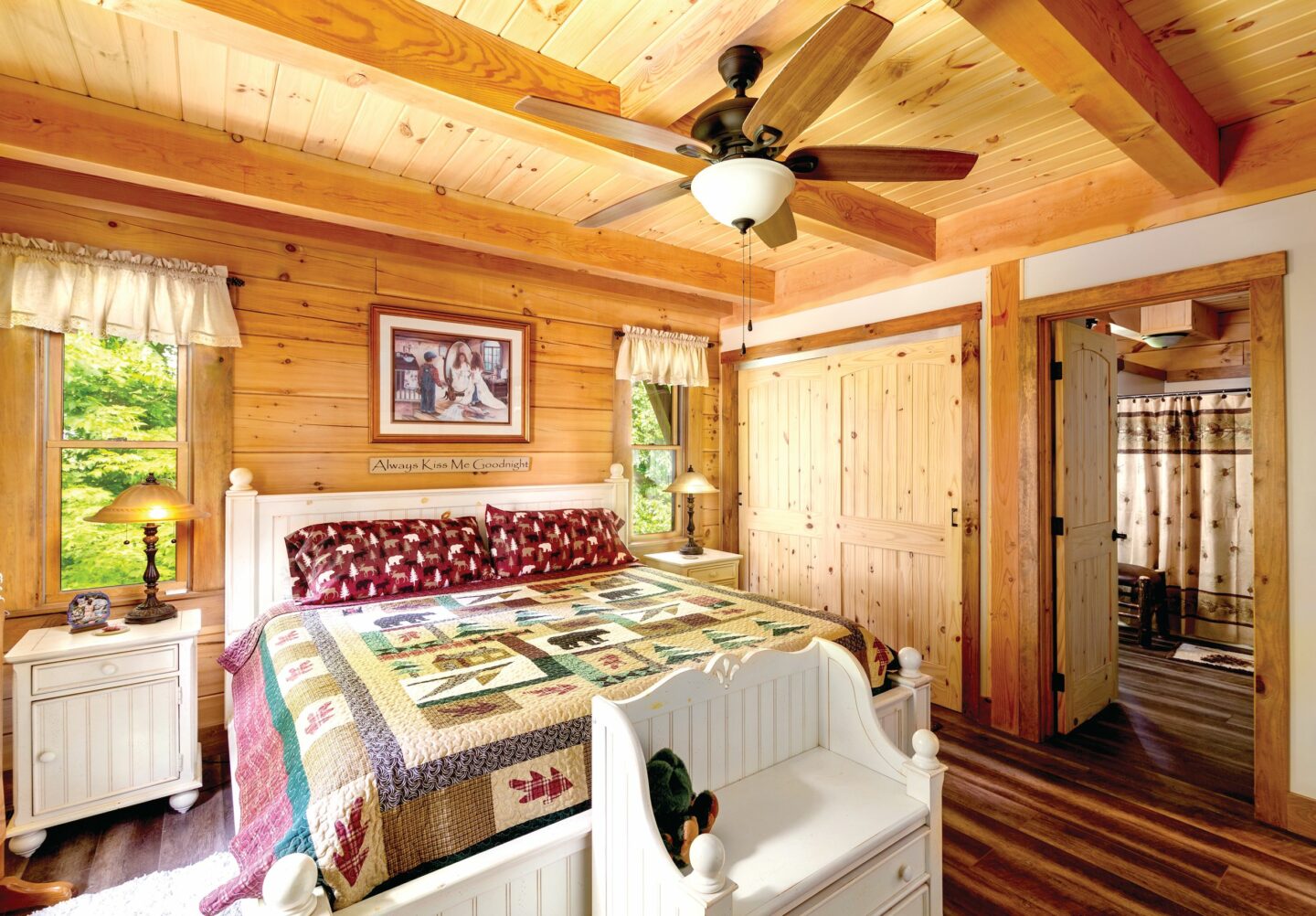
The couple furnished the house with pieces from their old home and some family heirlooms, as well as some new Amish-built hickory furniture. “The dining room table belonged to Stephanie’s mom,” says Ken. “They used to sit at that table and talk for hours, so it is sentimental.” Railroad memorabilia that Ken collected over the years is a nod to the family’s four generations of railroaders.
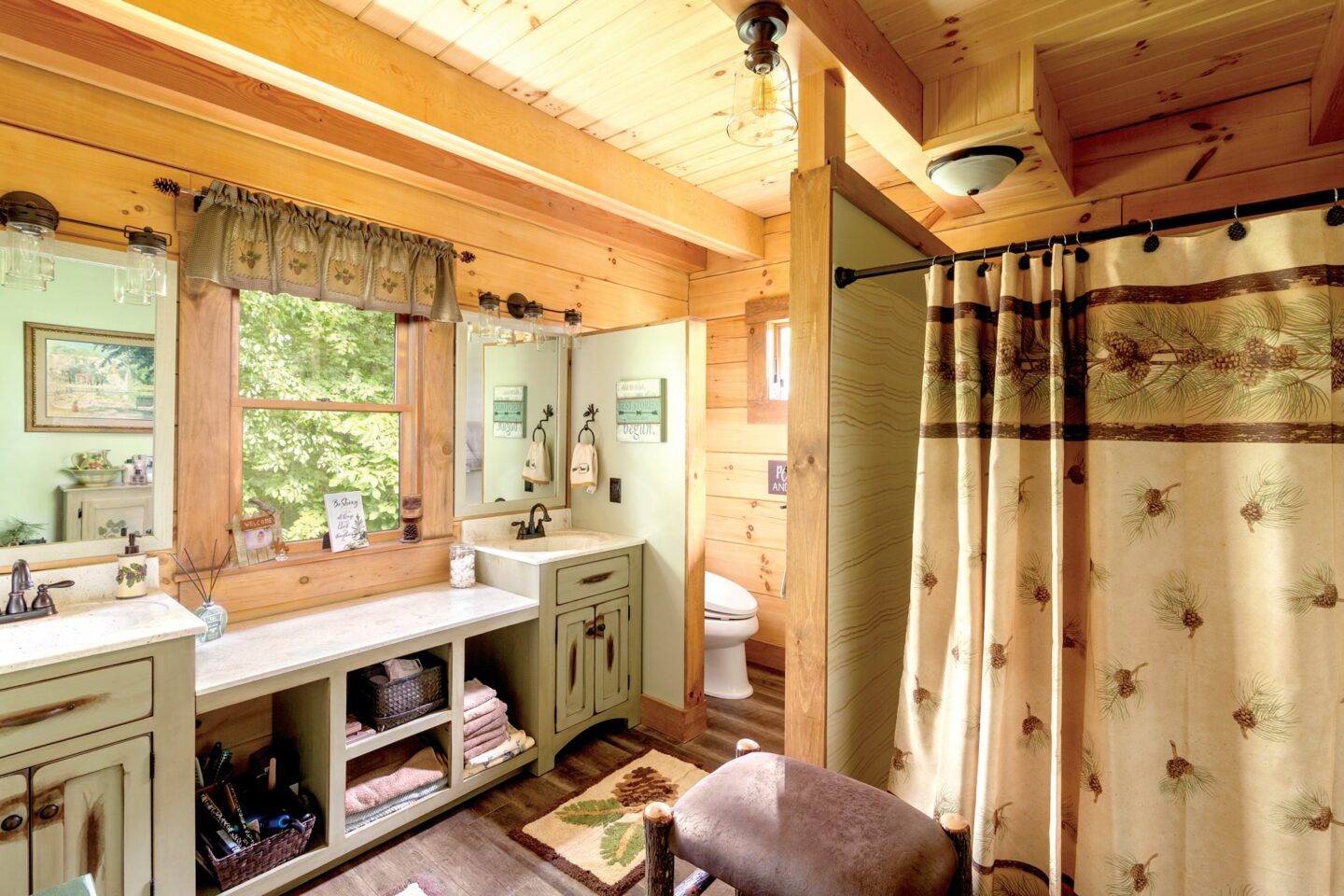
The smaller home means Ken and Stephanie have time to pursue other interests. “We’re retired, but we’re still gone a lot,” says Ken. “We’re busy with the kids and grandkids, and Stephanie goes to the YMCA and plays pickleball. A lot of time, we’re not home.”

With three forested acres on the crest of a hill, Ken is glad that his days of mowing a lawn are behind him. “We’re surrounded by trees,” says Ken. “In the winter when the leaves are gone, you can see the hills all around us.” Stephanie says that it feels like she’s on vacation every day. “Kind of like going to the Smoky Mountains and renting a cabin,” she says. “We don’t need to do that, now that we have our own cabin.”
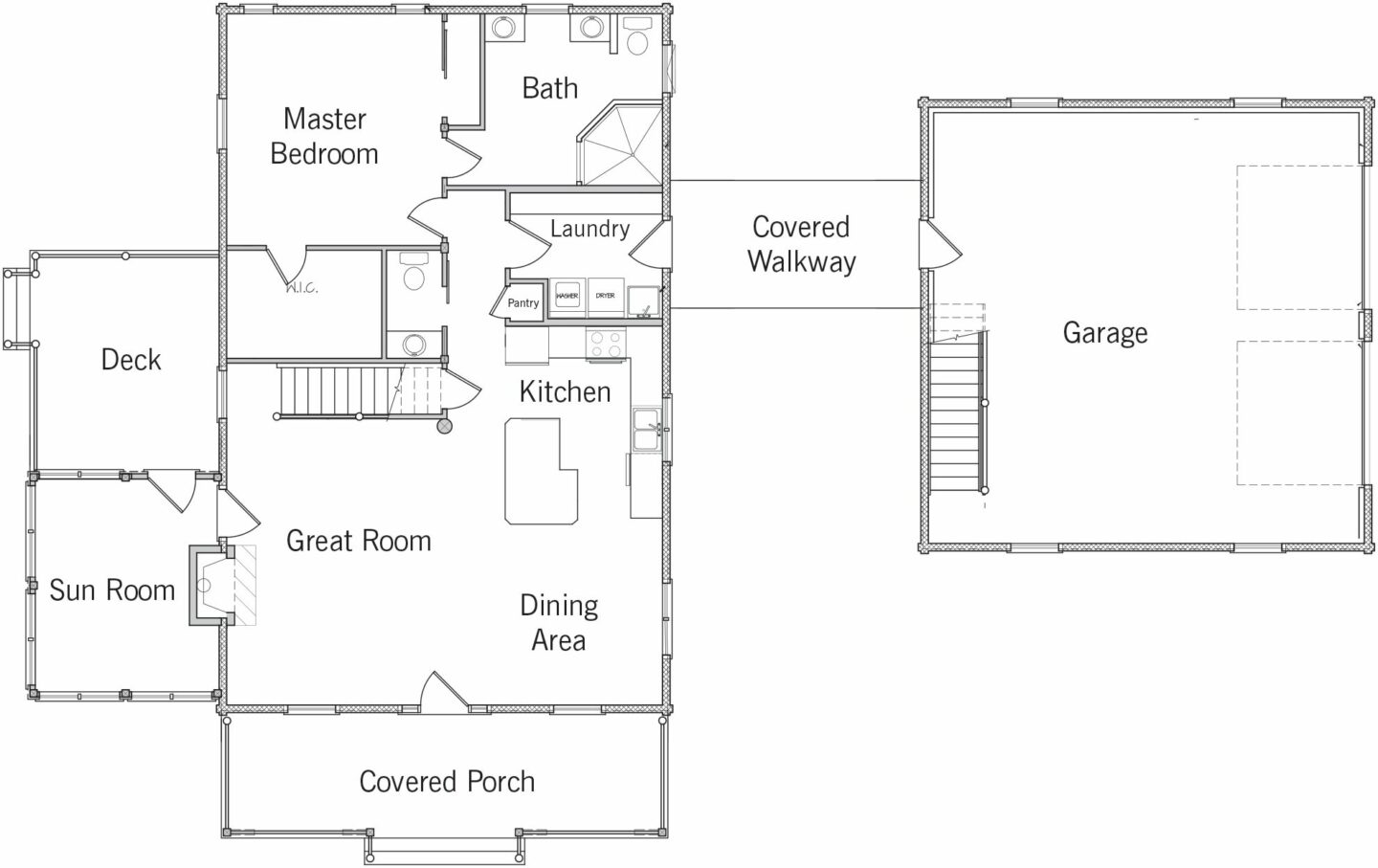
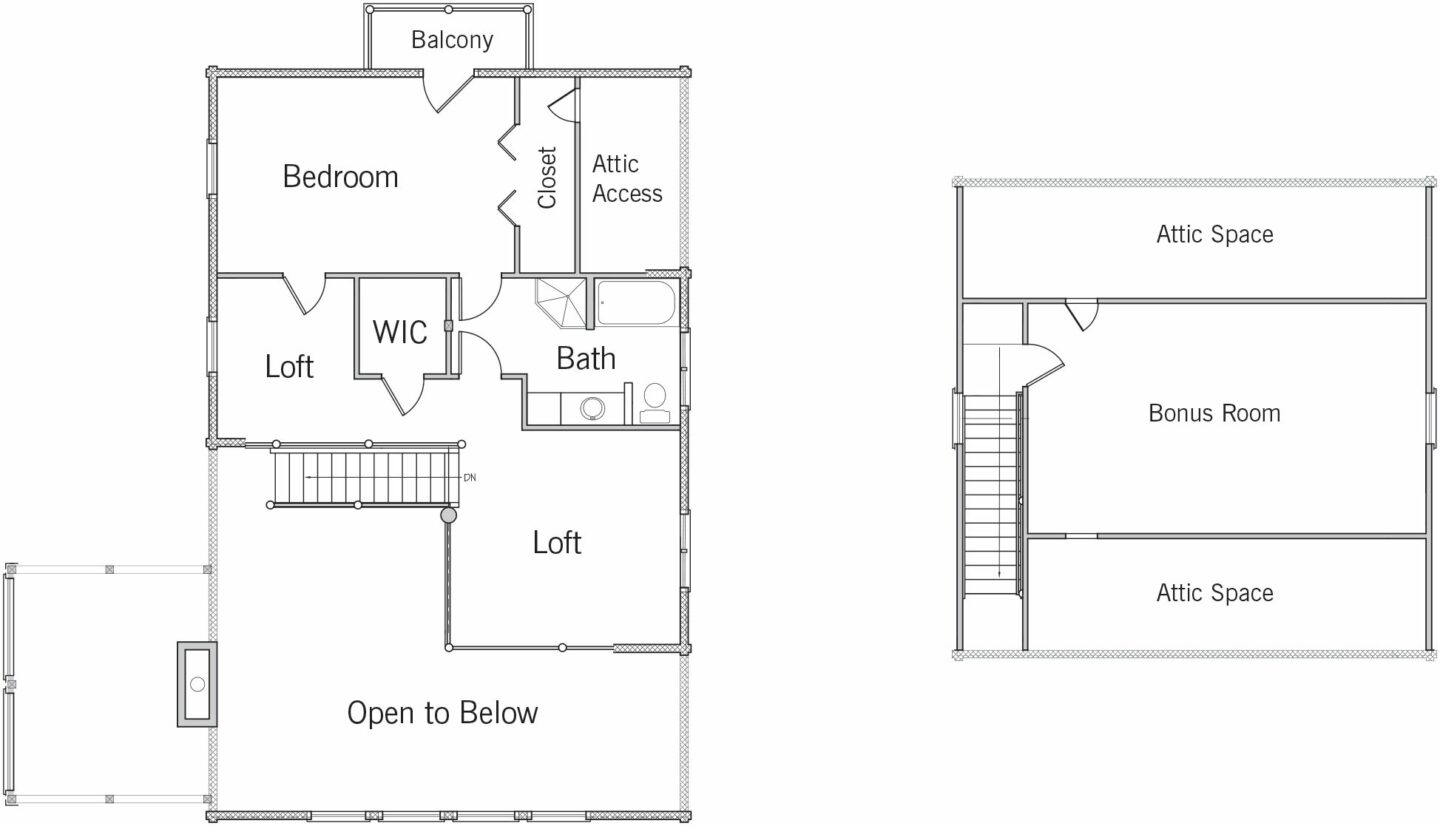
- Log Home Producer: Hochstetler Log Homes, Loudonville, Ohio
- Log Home Builder: Samuel Mast, Cedar Creek Cabins, Crab Orchard, Kentucky
- Two-story home
- Square footage: 2,250
- Bedrooms: 2 + bonus room
- Baths: 2.5

